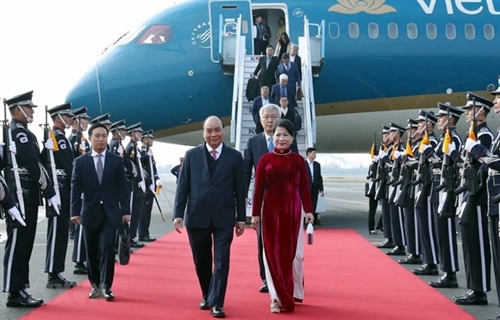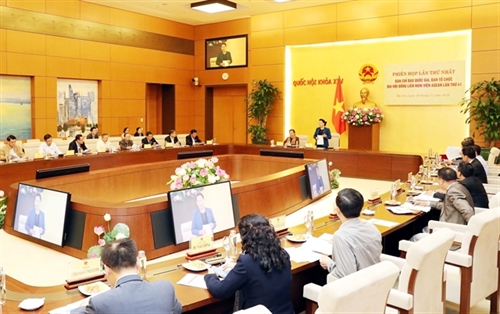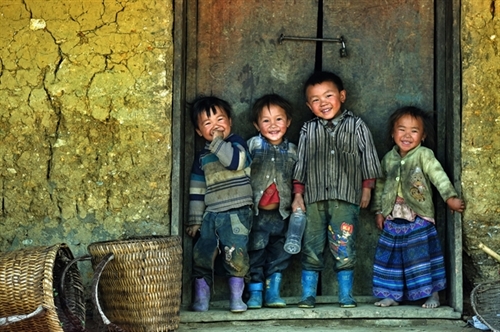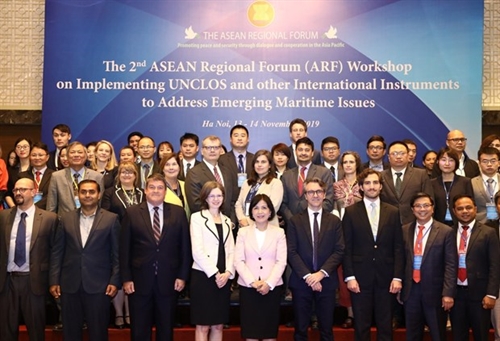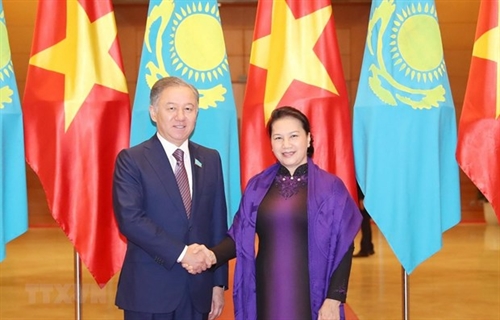Ta Thi Tam, M.A.
Institute of Anthropology
Vietnam Academy of Social Sciences
Then - a type of performance combining literature, music and dance - is not only a genre of folk art but also a cultural and belief activity of the Tay and Nung. Its songs and dances reflect the groups’ daily life ranging from happiness and sadness to ambitions and wishes for a happy and peaceful life.
Then singing is believed to be first performed for the King Mac Kinh Cung of the Mac dynasty at the end of the 16th century or the early 17th century in Cao Bang province. Legend has it that Then singing was invented by two mandarins of the Mac dynasty, Be Van Phung and Nong Van Quynh, who were talented poets and musicians. Being immensely fond of Then performances, the King order royal singing troupes to disseminate Then songs and dances to the people. Then singing has been descended from generation to generation until today.
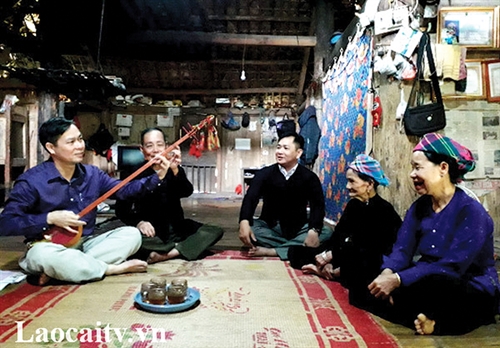 |
| Artisan Luong Van Nguyet (second from left) introduces dan tinh to guests__Photo: laocaitv.vn |
Then singing is often performed with a musical instrument called dan tinh or tinh tau (a long-necked lute with a gourd body and three strings). It was said that dan tinh used to have 12 strings and therefore could create very beautiful sounds. Being afraid that the King might overenjoy the singing and neglect his duties, artisans cut down the number of strings of dan tinh to three.
Then performers are called Then masters. They are believed to be fairies or children of the heaven who help connect humans with the Jade Emperor, the Ruler of the Heaven, and the Dragon King, the king of the ocean and river, and have a special power to contact with people in the other world. In the past, Then masters had to keep themselves pure and abstain from impurities, e.g., eating beef or dog meat. Tay people also have an altar for Then in their homes, which, however, is not located at the middle chamber like the ancestors’ altar but placed in a lean-to and covered with brocade baldachins.
Then masters are also regarded as healers and artists of their villages. In the capacity of healers, they bring spiritual therapies to patients and help them relax their psychological tension. Meanwhile, as folk performers, they are multi-talented artists greatly adored and loved by people.
In the Tay’s belief, the spiritual world of Then is a multi-deity world and each Then performance represents a difficult and hard trip from earth to heaven. With their songs and dances, Then masters travel to the heaven to beg for mercy from God on behalf of humans and, at the same time, act as the representative of God, bringing about miracles in support of humans in their mundane life.
Not everyone can become a Then master. Then masters always come from multi-generational Then families. A person who is chosen to become a Then master, called con so, will have to learn from two teachers called mother Then and father Then . He then receives a new name and may only say such name in front of the Jade Emperor. Before going through le cap sac, the ritual where con so is recognized as a professional Then master, he must adhere to a series of strict rules in day-to-day activities, respecting their teachers, refraining from eating meat, practicing sexual abstinence, etc.
The Tay and Nung hold Then belief rituals in which Then masters sing and dance to pray for various things.
In the first lunar month every year, the Tay and Nung families usually invite Then masters to their houses to conduct a Then ritual in which the latter sings happy Then songs to pray for peace, health and a prosperous year.
In case a family head has a bad dream or sees an augury, for example, a snake, weasel or fox running through his house, he will invite a Then master to his house to get rid of misfortunes. Then rituals may also conducted to relieve a family from its run of bad luck, for instance, when the family meets with difficulties or a family member has an accident or gets a disease. Besides, Tay families usually seek a Then master who is believed to be capable of negotiating with the god to find souls of sick people to help them recover from illness or conduct a ritual to say goodbye to people, even children, who have just passed away.
A Tay and Nung couple that wishes to have a baby also organize a ritual, called Bjooc, where Then masters pray the happiness Goddess for a gold flower if the couple wish for a baby boy or a silver flower if they wish for a baby girl.
Then rituals are important not only to Tay and Nung families but also their communities. In order to pray for a bumper crop, Then rituals will be held at a village’s field or a place worshipping the kitchen god. At the ritual, a Then master sings to pray the god in charge of the fields for favorable weather and bumper crops.
The biggest Then ritual is called Lau Then, which must be held by every Then master once every three to five years to ask the Jade Emperor to promote his rank. The offerings at Lau Then, that involves the performance of dozens of Then masters, are flowers, tea, wine, rice and meat. A Then master’s rank is recognized through the number of their hats’ fringes and a Then master who has the highest rank will have 15 fringes on his hat. Then masters who have organized Lau Then once can only conduct ordinary rituals such as those to pray for peace. Meanwhile, those who have organized Lau Then more than three times can solve other important issues. When getting old and incapable of conducting Then practice, Then masters usually organize Lau Then to express their gratitude and announce their retirement.-



